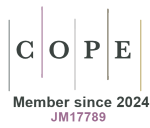Most read articles by the same author(s)
- Roberto Ravasio, Davide Paolini, Matteo Dionisi, Vincenzo Arena, Economic evaluation of the organizational impact of adopting different in situ hybridization technologies to assess HER2 gene amplification in breast cancer , Global and Regional Health Technology Assessment: Vol. 4 No. 1 (2017): January-December 2017
- Maurizio Muratore, Alberto Migliore, Francesca d’Onofrio, Roberto Perricone, Romano Bucci, Crescenzio Scioscia, Angelica Gattamelata, Felice Sensi, Giovanni Minisola, Marina Lo Vullo, Maria Iolanda Famà, Roberto Ravasio, Economical Evaluation of the Sustain Program for the Out-of-Hospital Administration of Abatacept for Rheumatoid Arthritis , Global and Regional Health Technology Assessment: Vol. 3 No. 3 (2016): September-December 2016
- Gian Piero Perna, Roberto Ravasio, Antonio Ricciardelli, Budget impact analysis of ticagrelor for preventive treatment of patients with acute coronary syndromes , Global and Regional Health Technology Assessment: Vol. 4 No. 1 (2017): January-December 2017
- Roberto Ravasio, Fabio Rigo, Emanuela Lattuada, Ercole Concia, Massimiliano Lanzafame, Economic Evaluation of Nevirapine plus Raltegravir as Maintenance Antiretroviral Therapy in Virologically Suppressed HIV-1 Infected Patients , Global and Regional Health Technology Assessment: Vol. 3 No. 2 (2016): May-August 2016
- Roberto Ravasio, Andrea Marcellusi, Luca De Nicola, Economic impact of dapagliflozin in the management of chronic kidney disease in Italy: results from a micro-simulation model , Global and Regional Health Technology Assessment: Vol. 11 No. 1: January-December 2024
- Alessio Aghemo, Giovanna Lunghi, Roberto Ravasio, Erminio Torresani, Matteo Dionisi, Davide Paolini, Massimo Colombo, Cost analysis of residual viremia detected by two real-time PCR assays for response-guided (dual or triple) therapy of HCV genotype 1 infection , Global and Regional Health Technology Assessment: Vol. 4 No. 1 (2017): January-December 2017
- Roberto Ravasio, Roberto Giacomelli, Stefano Bianchi, Erratum in: Budget Impact Analysis of anakinra in the treatment of patients with Still’s Disease , Global and Regional Health Technology Assessment: Vol. 7 No. 1 (2020): January-December 2020
- Roberto Ravasio, Mauro Maresca, Barbara Busà, Benedetto Maurizio Celesia, Budget impact analysis in the maintenance raltegravir-containing regimen in virologically suppressed HIV infected patients , Global and Regional Health Technology Assessment: Vol. 4 No. 1 (2017): January-December 2017
- Roberto Ravasio, Economic Impact of Therapeutic Choices: The Case of Incretins , Global and Regional Health Technology Assessment: Vol. 1 No. 2 (2014): July-December 2014









